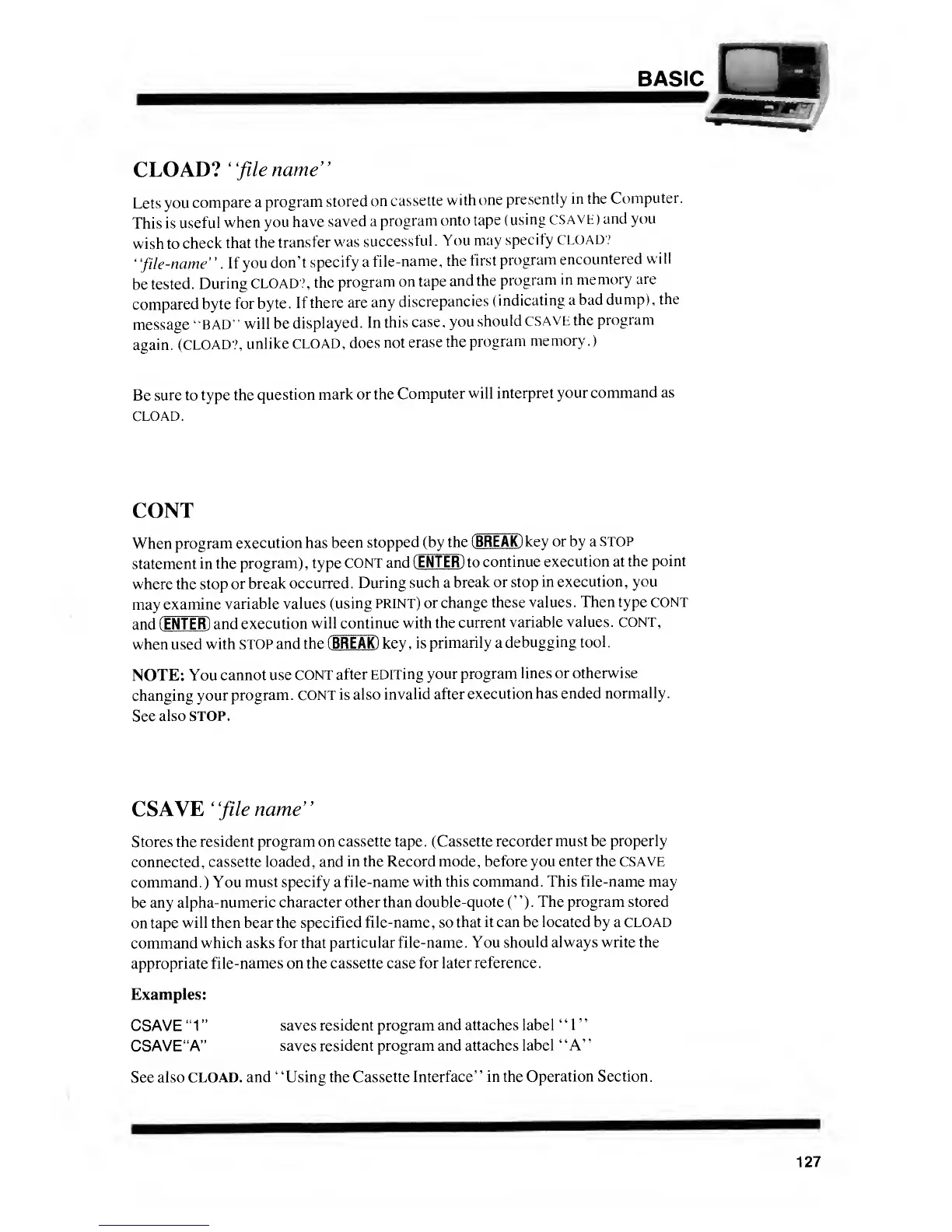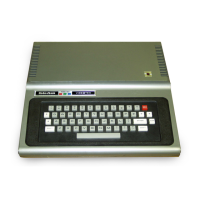BASIC
CLOAD?
"filename"
Lets
you
compare
a
program
stored
on
cassette
with
one
presently
in the
Computer.
This
is
useful
when
you have
saved a
program
onto
tape
(using
CSAVE)
and you
wish to
check
that
the
transfer
was
successful.
You may
specify
CLOAD?
'
'file-name'
' . If
you
don't
specify a
file-name,
the
first
program
encountered
will
be
tested.
During
CLOAD?,
the
program
on tape
and the
program
in
memory
are
compared
byte
for
byte. If
there
are
any
discrepancies
(indicating a
bad
dump),
the
message
"BAD"
will
be
displayed.
In
this
case,
you
should
CSAVE
the
program
again.
(CLOAD?,
unlike
CLOAD,
does
not
erase
the
program
memory.
)
Be
sure to type the
question
mark or the
Computer
will interpret
your
command as
CLOAD.
CONT
When
program
execution has
been
stopped (by the
(BREAK)
key or by
a
STOP
statement
in the
program) , type
CONT and
(ENTER) to
continue
execution at
the point
where the stop
or break
occurred.
During
such
a
break or stop
in execution, you
may
examine
variable
values
(using print)
or change
these values
.
Then type CONT
and
(ENTER) and
execution
will continue
with
the current
variable
values. CONT,
when used
with
STOP and
the (BREAK) key
, is
primarily
a
debugging
tool
.
NOTE: You
cannot use
CONT
after EDITing
your
program
lines or otherwise
changing
your
program. CONT
is also
invalid after
execution
has ended
normally.
See
also STOP.
CSAVE
"file
name"
Stores the
resident program on
cassette tape. (Cassette recorder
must be properly
connected,
cassette loaded, and
in the Record mode, before you
enter the CSAVE
command.) You
must specify
a
file-name
with this command. This file-name may
be
any alpha-
numeric character other than
double-quote
(
")
.
The program stored
on tape
will then bear the specified
file-name, so
that it can be located by
a
CLOAD
command
which asks for that
particular file-name. You
should always write the
appropriate
file-names on the cassette case for
later reference.
Examples:
CSAVE
"1
"
saves resident program
and attaches label
"
1
"
CSAVE"A" saves
resident program and attaches
label "A"
See
also CLOAD.
and
'
'Using the Cassette
Interface'
'
in the
Operation Section.
127

